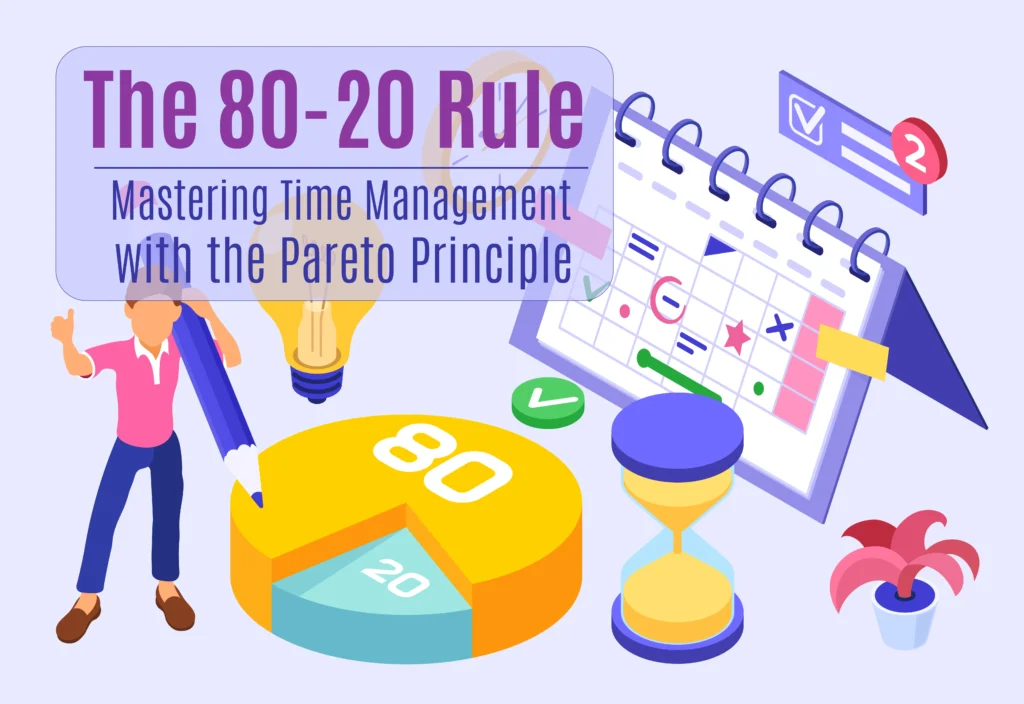What Is the FIRE Movement? How to Retire Early and Live Your Dreams
The FIRE movement, short for Financial Independence, Retire Early, has taken the personal finance world by storm. It’s a growing trend, especially among millennials and Gen Z, who want to break free from the traditional 9-to-5 work life and achieve financial independence while still young enough to enjoy it. But achieving FIRE isn’t just about saving for retirement; it’s about transforming your relationship with money and life itself.
In this article, we’ll explain what the FIRE movement is, how it works, the strategies that can help you reach financial independence, and whether retiring early might be the key to living the life you’ve always dreamed of.

Understanding the Basics of the FIRE Movement
The FIRE movement revolves around two core principles: financial independence and retiring early. It’s about taking control of your finances so you can live life on your own terms, rather than working until you’re in your 60s or 70s. The idea is simple but powerful—save and invest aggressively during your working years, so you can build a nest egg large enough to live off of indefinitely.
What Does FIRE Stand For?
Financial Independence (FI)
At the heart of FIRE is financial independence (FI), which means reaching a point where your passive income from investments covers all your living expenses. At this stage, working becomes a choice rather than a necessity. Financial independence isn’t just for the ultra-wealthy—it’s achievable for anyone willing to adopt a disciplined approach to saving, investing, and managing their money.
Retire Early (RE)
The other side of the coin is retiring early (RE). Once you’ve achieved financial independence, you can leave the workforce and spend your time doing whatever you want. This could mean traveling, pursuing hobbies, volunteering, or even starting a passion project. The concept of retiring early challenges the traditional idea of retirement being something you do in your 60s or 70s, by aiming for retirement in your 30s, 40s, or 50s.
Origins and Growth of the FIRE Movement
How the FIRE Movement Started
The FIRE movement traces its roots back to the early 1990s, with the publication of influential books like “Your Money or Your Life” by Vicki Robin and Joe Dominguez. These works emphasized the idea that money should be used as a tool for freedom and happiness, rather than just a way to accumulate more stuff. Over the last decade, FIRE has gained massive popularity through blogs, podcasts, and social media communities, where people share their journeys to financial independence.
Why FIRE Appeals to Younger Generations
FIRE’s appeal has been especially strong among millennials and Gen Z, who often feel disillusioned with traditional career paths. Many of them are rejecting the idea of working for decades in a high-stress job, only to retire when they’re too old to fully enjoy their newfound freedom. The FIRE movement offers an alternative—a way to achieve freedom much earlier in life, allowing people to focus on their passions, spend more time with family, and live life on their own terms.
Different Types of FIRE
Not everyone pursuing FIRE has the same financial goals or lifestyle aspirations. There are several variations of FIRE, each catering to different financial situations and personal preferences.
Lean FIRE
Minimalist Approach to FIRE
Lean FIRE is for those who are willing to live extremely frugally in retirement, often on a low budget. This approach involves cutting expenses to the bare minimum to achieve financial independence faster. With Lean FIRE, you may need a smaller nest egg, but the trade-off is living a highly minimalist lifestyle.
Fat FIRE
More Comfortable Lifestyle FIRE
On the other end of the spectrum is Fat FIRE, where individuals save enough to maintain a more comfortable and often luxurious lifestyle in retirement. Fat FIRE requires a larger savings goal, allowing for more discretionary spending. This approach is ideal for those who want financial independence without sacrificing comfort or travel during retirement.
Barista FIRE
Semi-Retirement Approach
Barista FIRE combines financial independence with part-time work. People who follow this path achieve partial financial independence but continue working part-time, often in lower-stress jobs (like a barista, hence the name) to supplement their income. This allows for more flexibility without fully committing to traditional full-time employment.
Coast FIRE
Slow-Build Wealth and Early Savings
Coast FIRE refers to saving aggressively in the early stages of your career, then stopping or reducing contributions later on. With Coast FIRE, you’ve invested enough that your portfolio will grow over time, allowing you to eventually reach financial independence without needing to save more. This option offers the benefit of “coasting” through your later years without the pressure to save heavily.
Key Strategies to Achieve FIRE
Achieving FIRE is possible for anyone, but it requires dedication and a solid financial strategy. Below are some of the core strategies that FIRE followers use to achieve their financial independence goals.
Strategy 1: Save Aggressively
High Savings Rate of 50-70% of Income
One of the key principles of FIRE is maintaining a high savings rate. Many people pursuing FIRE aim to save 50-70% of their income, which allows them to accumulate the wealth they need much faster than the average saver. To do this, they typically reduce unnecessary expenses, live well below their means, and funnel all extra money into savings and investments.
Cutting Expenses to Boost Savings
To save aggressively, FIRE followers often cut back on discretionary spending. This can include:
- Downsizing to a smaller home
- Driving used cars instead of new ones
- Reducing entertainment and dining out
- Avoiding lifestyle inflation (i.e., not increasing spending as income rises)
These choices may seem extreme, but they allow for a faster accumulation of wealth and a shorter path to financial independence.
Strategy 2: Invest Wisely and Consistently
Low-Cost Index Funds and ETFs
Investing is a critical part of the FIRE journey. Most people aiming for FIRE prefer to invest in low-cost index funds or ETFs (Exchange-Traded Funds) that track the overall stock market. These funds are inexpensive to maintain, diversify risk, and provide long-term growth potential.
Compounding and the Power of Time
One of the greatest advantages of investing early is the power of compound interest. The longer you stay invested, the more your money grows. The returns on your investments begin to generate their own returns, accelerating your wealth-building process. Starting early and staying consistent is key.
Strategy 3: Maximize Income Streams
Side Hustles and Passive Income
FIRE enthusiasts often look for ways to maximize their income by starting side hustles or building passive income streams like rental properties, dividends, and online businesses. These extra income sources can speed up the journey to financial independence by increasing your total savings and investments.
Career Advancement and Salary Increases
Another crucial part of the FIRE strategy is maximizing your income through career growth. By seeking promotions, negotiating higher salaries, or switching to higher-paying industries, you can boost your income and save more quickly.
≫ Learn More: 5 Best Side Hustles to Achieve Financial Independence
How Much Do You Need to Retire Early?
Determining how much you need to save for early retirement depends on your desired lifestyle, spending habits, and where you plan to live. Here are some guidelines to help you figure out how much to save.
The 25x Rule and the 4% Rule
How the 25x Rule Helps Set a Retirement Goal
The 25x rule is a common FIRE guideline. It suggests that to retire, you need a savings balance of 25 times your annual expenses. For example, if you plan to spend $40,000 per year in retirement, you’ll need $1 million saved to achieve financial independence.
The 4% Safe Withdrawal Rate
The 4% rule is another important concept in the FIRE movement. It’s based on research that shows you can safely withdraw 4% of your investment portfolio each year and have enough money to last for 30 years or more. By following the 4% rule, you can determine how much you’ll need to retire and live off your savings.
Adjusting for Inflation and Healthcare Costs
Long-Term Inflation Adjustments
When planning for FIRE, it’s crucial to account for inflation, which can erode your purchasing power over time. Adjust your retirement plan to ensure that your savings grow enough to keep up with rising costs.
Healthcare Costs in Early Retirement
Healthcare is a significant concern for early retirees, especially before they’re eligible for Medicare at age 65. You’ll need to budget for health insurance and out-of-pocket medical expenses during those gap years.
The Importance of Flexibility in FIRE Plans
Adapting to Market Conditions and Life Changes
No plan is perfect, and life can throw unexpected curveballs your way. It’s important to stay flexible with your FIRE plan. You may need to adjust your spending, work part-time, or reduce your withdrawal rate if market conditions change or your expenses increase unexpectedly.
Benefits of Achieving Financial Independence and Early Retirement
The benefits of achieving FIRE go far beyond financial security. FIRE is about creating a life you truly love.
Freedom to Pursue Your Passions
Time to Focus on What Matters
When you no longer have to work for money, you’re free to spend your time however you want. Whether it’s traveling the world, pursuing hobbies, volunteering, or spending time with loved ones, financial independence gives you the freedom to focus on what really matters.
Reduced Stress and Greater Life Flexibility
Escaping the Traditional 9-to-5
Many people who achieve FIRE find that their stress levels decrease dramatically once they leave the traditional 9-to-5 behind. Without the pressure of work deadlines, commutes, and office politics, they can live a more relaxed and fulfilling life.
More Control Over Your Future
Building a Lifestyle You Love
FIRE gives you the power to design the life you’ve always dreamed of, without the constraints of financial necessity. You have more control over your time, relationships, and experiences, allowing you to shape your future in a way that aligns with your values and passions.
Challenges and Drawbacks of the FIRE Movement
While the FIRE movement offers many benefits, it’s not without its challenges.
Extreme Frugality and Lifestyle Sacrifices
The Cost of Cutting Back Too Much
Achieving FIRE often requires extreme frugality, which can lead to lifestyle sacrifices. Some people find it difficult to balance cutting costs with maintaining a happy and fulfilling life. It’s important to find the right balance that works for you.
Uncertainty in Long-Term Financial Markets
Planning for Market Volatility and Economic Downturns
Relying on investments for long-term financial security can be risky. Market volatility and economic downturns can significantly impact your portfolio, especially if you experience a downturn early in your retirement. Building a plan that accounts for these risks is essential.
Health and Healthcare Concerns in Early Retirement
Covering Healthcare Before Medicare
One of the biggest challenges of early retirement is covering healthcare costs before Medicare eligibility at age 65. Early retirees often need to purchase private health insurance or use the Affordable Care Act (ACA) marketplace, both of which can be expensive.
Social and Psychological Adjustments
Coping with a Non-Traditional Lifestyle
Leaving the workforce early can also create social and psychological challenges. Many people find purpose and identity through their careers, and retiring early may leave them searching for new ways to stay engaged and connected with others.
Is FIRE Right for You? Evaluating Your Own Path
The FIRE movement isn’t for everyone. It requires discipline, sacrifice, and a willingness to live differently than most people. But for those who are motivated to achieve financial freedom, it can be life-changing.
Assessing Your Values and Goals
Balancing Early Retirement with Personal Fulfillment
Before pursuing FIRE, consider whether it aligns with your personal values and long-term goals. Do you want to retire early to pursue your passions, or is work something you genuinely enjoy? Understanding what motivates you can help you decide whether FIRE is the right path.
Creating a Custom FIRE Plan
Tailoring FIRE Strategies to Fit Your Life
FIRE isn’t one-size-fits-all. You can customize your approach based on your unique financial situation and lifestyle preferences. Whether you aim for Lean FIRE, Fat FIRE, or something in between, you can build a plan that works for you.
Conclusion: Achieving Financial Independence and Living Your Dreams
The FIRE movement offers a compelling alternative to traditional retirement. By saving aggressively, investing wisely, and embracing a lifestyle of intentional living, you can achieve financial independence and retire early, creating the freedom to live your life on your own terms. While the journey requires discipline and planning, the reward is the ability to focus on what truly matters to you.
If FIRE aligns with your dreams, now is the perfect time to take the first step. With the right strategy, you can achieve financial independence and turn your early retirement dreams into reality.
















